
Background information
Why the 10-per-cent rule in jogging is actually wrong
by Siri Schubert

Love running and want to avoid injuries and overstraining at all costs? And become more efficient at the same time? Then a running analysis might be the right thing for you.
Luckily, I have hardly any problems when running. My joints, tendons and ligaments have been able to keep up with my training without complaint.
But since I’ve dipped my feet in ultra-distances, good technique, suitable shoes and injury prevention have become more of a focus. After all, I want to be healthy, pain-free and have fun running. And not ruin my tendons and joints.
So I decided to do a running analysis at Swissbiomechanics – a spin-off from ETH University that specialises in motion analysis.
If you’re thinking: «I know this, I’ve already had one done in a sports shop», that’s not entirely true. This is because the running analysis at Swissbiomechanics goes much deeper and also looks very closely at factors such as mobility and imbalances. The measurements are taken with infrared cameras and reflectors and analysed using software.
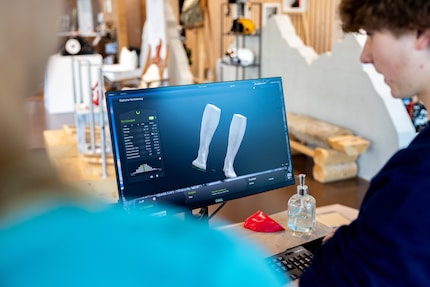
Perhaps even more importantly, the tests aren’t only carried out on the treadmill, but also while running on firm ground. This is much closer to the actual running load than jogging on the belt. It goes without saying that this running analysis isn’t cheap. The current price of the Next Level Running Analysis 3D is 350 francs and it takes 135 minutes.
First, my feet and calves are 3D scanned and measured. I get to wear quirky, colourful socks with a grid pattern on them. The measurement shows that both of my sides are fairly balanced. The way I walk is also symmetrical. Not a bad start.
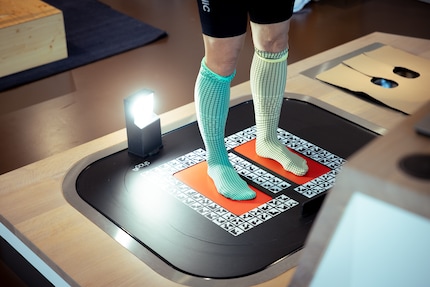
Then it’s on to the mobility test. Hips, pelvis, knees, feet – everything’s looked at. Biomechanist Annika Bill explains why the individual tests are important and how a lack of mobility in the ankle joints, for example, can affect running.
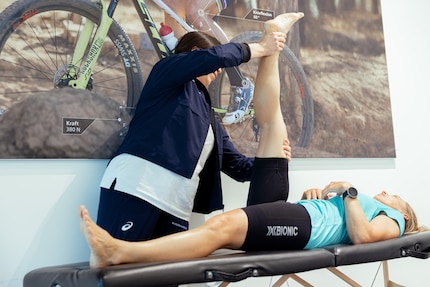
Next, my body is fitted with reflectors from head to toe, which allow the analysts to record my movements precisely.
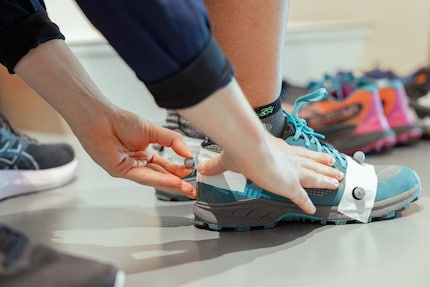
Then I it’s time to jog on the 40-metre indoor running track. Back and forth, at varying speeds. Several infrared cameras record every step. The end result is a movie that shows me as a running skeleton. Funny, but useful. This is because the images are used for a detailed 3D analysis of all my movements – from the swinging of my arms to the push-off with my feet.
The final step in the test are video recordings on the treadmill in different shoes and barefoot. Annika had previously looked at the profile of the different shoes. This also gives me an indication of my running style and possible incorrect strain.
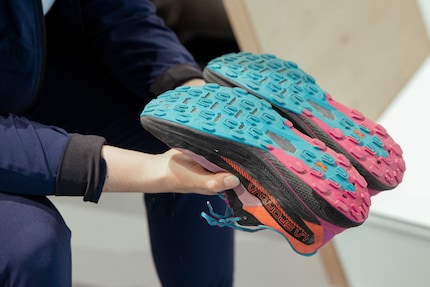
Then I did some squats, which were also captured on camera and analysed. Again, to understand the range of motion, mobility and stability.
An examination like this will be different for everyone. Nevertheless, I’d like to share my most important findings with you.
For the test, I brought along various pairs of running shoes I currently use in rotation. «These must be your favourite shoes,» says Annika, pointing to the Pythos 6 by Icebug. Before I can start raving about them, I’m cut short. «You can tell, they’ve run their course, you shouldn’t use them anymore,» she says. «Oh.» I hadn’t expected that.
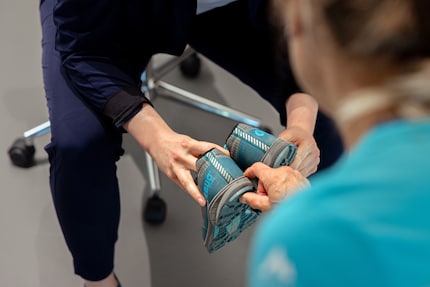
When we watch the video of the run in these shoes together, I can see it clearly. The midsole doesn’t give enough resistance anymore and the foot bends inwards. This can lead to joint problems.
Most running magazines and guidebooks recommend switching out your running shoes after 500 to 700 kilometres. I did the majority of my long runs last year in my Icebug shoes and racked up many kilometres. I thought that I’d feel it when the shoes were worn through.
I was impressed by how clearly this was demonstrated to me. I’ll certainly take the recommendations more seriously in future or – even better – buy shoes with a firmer and more durable midsole.
Fortunately, I have quite good joint stability in my ankles and knees and have therefore had no complaints so far. But the analysis shows that I don’t have optimal core stability and my hips, for lack of a professional term, kink when I run.
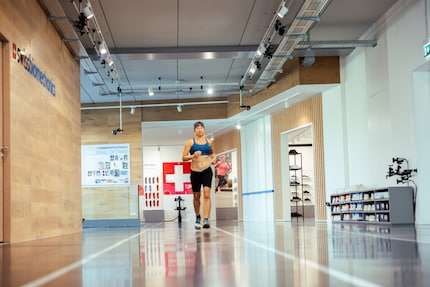
In the report I receive about two weeks after the analysis, biomechanist Annika recommends a series of hip and core stabilising exercises. Of course, in theory I know that stability training is important. But seeing the unwanted movement of my hips so obviously on video gives me an extra dose of motivation. The fact that Swissbiomechanics also provides me with seven exercises with illustrated instructions makes training even easier.
At a lower running speed of less than twelve kilometres per hour, I have too low a stride frequency and compensate with larger strides, according to the analysis. This increases the impact load on my hips and pelvis.
Until now, I’d thought all the noise on the internet around increasing your step count wasn’t true. But after seeing the analysis that was created for me individually, I try to take more, but smaller steps per minute. This kind of change takes time, but in the long term it’ll certainly ensure greater running efficiency and less strain on my bones and joints.
Running is a very natural movement. So it’s all the more surprising that just under half of all recreational runners have already had to deal with an overstrain injury. Ankles and knees are common problem areas.
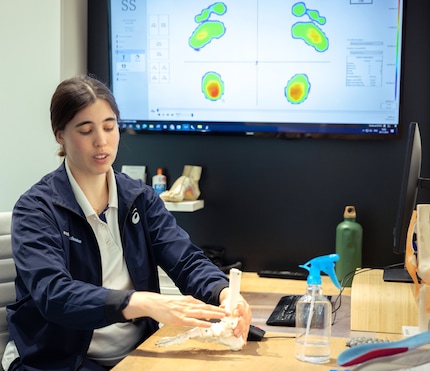
Research has also shown that weak hip muscles correlate with a higher incidence of injury. A further study has confirmed this and also shows that regular core and hip strengthening exercises reduce the risk of injury more effectively than ankle and knee stabilisation exercises.
The exercises that Annika suggested to me are therefore just the thing to stay healthy while running. Everyone can benefit from such specific recommendations and reduce their risk of injury.
I also found the shoe tips valuable. They confirmed that I run best in neutral shoes, which I already do anyway. I opted out of the recommended insoles for the time being as I have no complaints. However, they can be useful for people with recurring injuries or pain.
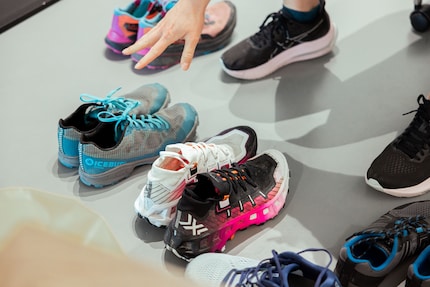
The tips on my running style were helpful because they didn’t try to impose a completely new running style on me. Instead, the idea is that these are small changes to reduce the burden on my body and increase efficiency. The analysis in 3D while jogging and sprinting is therefore also a valuable training tool, especially in combination with the evaluation by an expert.
Thanks to the customised examination, I feel well prepared for the new running season. In fact, it’s taught me so much more than countless YouTube videos, which may pick up on the latest or trending tips from high-performance sport, but are of little relevance to me as an ambitious amateur runner.
Swissbiomechanics provided me with the analysis free of charge for this article. However, the procedure, content and methods were lead in exactly the same way as the usual Next Level 3D running analyses.
Research diver, outdoor guide and SUP instructor – I love being in, on and around water. Lakes, rivers and the ocean are my playgrounds. For a change of perspective, I look at the world from above while trail running or flying drones.
Interesting facts about products, behind-the-scenes looks at manufacturers and deep-dives on interesting people.
Show all